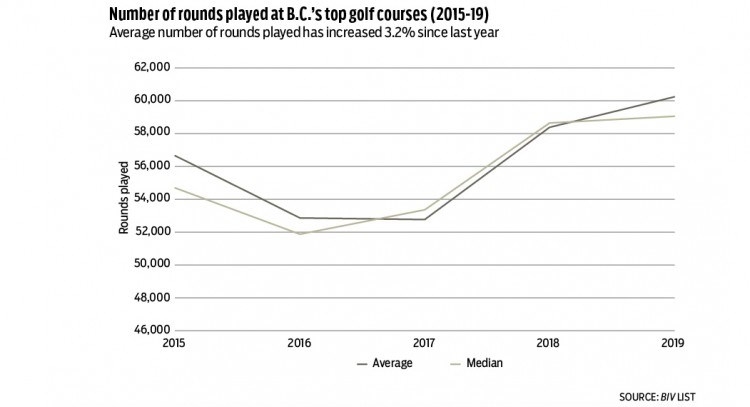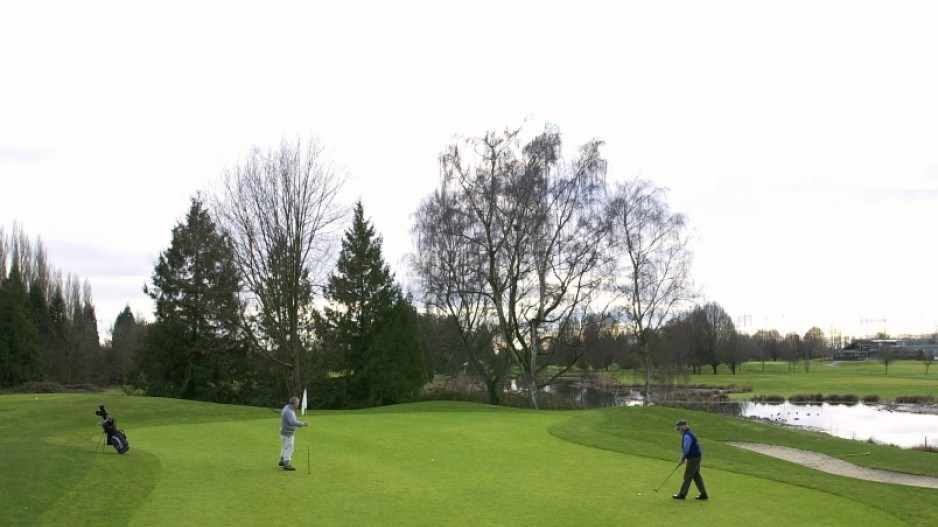Growth has been slowing at British Columbia’s top public golf courses, according to data from Business in Vancouver’s Busiest Public Golf Courses in B.C. list (https://biv.com/datatables/busiest-public-golf-courses-bc-2020). In 2018, golf courses on the list boasted their largest growth in at least five years. While growth has since slowed, the average rounds played at the top 10 golf courses grew 3.2% to 60,239.9 in 2019, up from 58,383.3 in 2018.
That growth followed a record 10.6% increase in 2018, up from 52,769 rounds played in 2017.
Slowing growth could suggest that public golf courses were already facing some issues before having to address COVID-19 restrictions this year.
2018 was the first year that the average rounds played at the top 10 public golf courses increased since 2015. The median number of rounds played somewhat paralleled the average number of rounds played, suggesting that courses in the bottom half of the top 10 grew at rates similar to those closer to the top of the list. However, over the past year, the median rounds played grew significantly less than the average, increasing by only 0.7%.

No. 1 Swaneset Bay Resort & Country Club had the largest one-year growth on the list, leaping 16.2% to 79,000 rounds in 2019 from 68,000 in 2018. No. 9 Northview Golf & Country Club had the largest one-year drop in rounds played, slipping 5% to 56,361 in 2019 from 53,559 in 2018.
Of the courses with five years of data available, No. 2 Riverway Golf Course & Driving Range had the largest five-year growth in rounds played, increasing 6.4% to 64,925 in 2019 from 61,006 in 2015.
No. 8 McCleery Golf Course had the largest five-year decline in rounds played, falling 19.4% to 39,999 in 2019, down nearly 10,000 from 49,606 in 2015.




